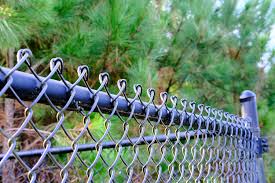
Defining Distance: The Role of Fences in Geography
Past their functional application, fences carry powerful symbolic relevance in man communities, which represents concepts of ownership, personality, and societal borders. As actual physical manifestations of restrictions, fences design our perceptions of place and impact our connections with all the built setting. Let’s look into the symbolic importance of fences (ploty) and realize why they may be more than simply structures—they are signs of individual tradition and modern society.
1. Ownership and Territory:
Fences symbolize possession and territorial boundaries, marking exactly where a single residence comes to an end and another starts. By determining boundaries, fences create feelings of management and control over property, strengthening personal or collective personal identity. In gardening configurations, fences delineate job areas and pastures, signifying management of terrain and assets. Likewise, in urban environments, fences demarcate private property from community area, asserting management and exclusivity.
2. Sociable Division and Exclusion:
fences (ploty) also can signify interpersonal divisions and exclusions in culture. High surfaces and limitations may signify separation and inequality, making physical barriers that separate residential areas based on socio-economical position or any other factors. On the other hand, fences with available gates and very low wall space signify inclusivity and link, attractive interaction and encouraging feelings of group. The design and exposure of fences reflect underlying sociable dynamics and potential buildings.
3. Social Personality:
In numerous ethnicities, fences hold strong societal significance and therefore are imbued with symbolism that reflects cultural principles and traditions. For example, in some ethnicities, elaborate fences are symbols of reputation and reputation, showing money and wealth. On the other hand, in other ethnicities, easy and useful fences might be respected for functionality and utilitarianism. Comprehending the social framework of fences allows us to take pleasure in their symbolic value in different societies.
4. Psychological Limitations:
Fences may also signify mental health borders that establish personalized area and autonomy. By producing bodily obstacles, fences provide people who have a feeling of stability and level of privacy, allowing them to create limitations and handle usage of their personal area. This feeling of boundary handle is essential for preserving emotional well-simply being and social relationships, as it allows individuals to assert their autonomy and safeguard their private borders.
5. Enviromentally friendly Affect:
The proliferation of fences has environment consequences, especially in normal countryside and animals habitats. Extensive fencing can fragment environments and disrupt wild animals corridors, having an effect on biodiversity and ecosystem wellness. However, eco-friendly fencing choices, such as wildlife-warm and friendly patterns and permeable limitations, offer you alternatives that equilibrium human being needs with environmental conservation. By minimizing their environmental footprint, fences can bring about the preservation of organic panoramas and wild animals habitats.
To sum up, fences are not only actual structures they are signs that signify intricate interpersonal, cultural, and mental dynamics. As guardians of boundaries, fences design human connections and panoramas, exhibiting and reinforcing societal principles and norms. Appreciating the symbolic significance of fences enhances our knowledge of the built setting and our romantic relationship together with the terrain.